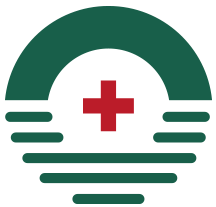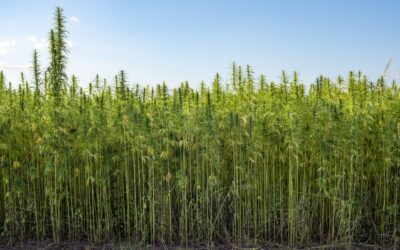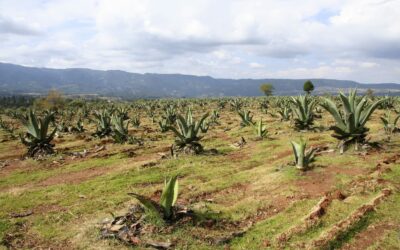CBD (cannabidiol) has become a popular remedy for a broad range of health issues. This substance has been promoted as being beneficial for better sleep, reducing anxiety, and even helping reduce levels of chronic pain.
When it comes to over-the-counter CBD, there are many types available. We’re focusing on broad-spectrum and full-spectrum CBD and how to know the difference.
The Differences Between Broad-Spectrum and Full-Spectrum CBD
The main difference between broad-spectrum and full-spectrum CBD is the compounds found in each type of extract. Both contain certain kinds of cannabidiols and other substances, but there’s a difference in the levels of these substances in the two types of CBD.
Full-spectrum CBD contains natural extracts from the cannabis plant, including cannabinoids and terpenes. These products also contain up to 0.3% of THC (the psychoactive substance in cannabis plants).
On the other hand, broad-spectrum CBD contains many of the same plant extracts. However, products made with this substance usually only have trace amounts of THC.
In addition, each type of CBD has its pros and cons, which we’ll review in the following sections.
The Pros & Cons of Full-Spectrum CBD
Full-spectrum CBD has several different cannabinoids that come from the cannabis plant, including a low amount of THC. As noted earlier, THC levels can be no higher than 0.3% for this type of CBD. This level of THC is governed by federal laws that are in place for CBD products.
This type of CBD does not contain enough THC to cause a “high” that some individuals believe goes with cannabis use. However, many people are not aware that THC levels may increase if manufacturers create concentrate products. As an example, some CBD tinctures may contain up to 2 mg/ml of THC. This can be enough to have a psychoactive effect (create a high).
What’s more, full-spectrum CBD also contains terpenes, which give the cannabis plants their scent. Studies have also shown that terpenes are responsible for the entourage effect, which may make these products more beneficial for treating health issues.
Pros of Full-spectrum CBD:
Full-spectrum CBD may have the following health benefits:
- Anti-seizure
- Antioxidant
- Pain relief
- Anti-inflammatory
- Anti-anxiety
Cons of Full-spectrum CBD:
Full-spectrum CBD is helpful in treating a wide range of health issues. However, it also has some cons.
- A large dose of CBD may cause a person to become high
- Using full-spectrum CBD may also make a drug test come out positive (many tests screen for THC, which full-spectrum CBD products may contain)
The Pros & Cons of Broad-Spectrum CBD
Broad-spectrum CBD does contain some of the same compounds as full-spectrum CBD. However, this type of CBD does not contain THC (and if so, then only trace amounts). Here are the pros and cons of broad-spectrum CBD products.
Pros of Broad-Spectrum CBD
CBD can have a positive effect on some health issues; these products can act as:
- Antibiotics
- Anti-seizure medications
- Anti-inflammatories
Cons of Broad-spectrum CBD
- One con is that broad-spectrum CBD does not contain THC, which means it can’t treat as many health issues.
- People who use broad-spectrum CBD products may end up with a positive drug test. This is because the products may contain trace amounts of THC.
What Type of Broad-Spectrum and Full-Spectrum CBD Products are Available?
Both types of CBD come in a range of products that are beneficial.
For instance, broad-spectrum CBD includes the following products:
Gummies: these are a great way for people to take CBD. The gummies are usually flavoured and simply melt in your mouth, and you still get the full benefit of the broad-spectrum CBD.
CBD tincture: this is an herbal liquid that contains a mixture of water and alcohol, along with CBD. However, there are also tinctures available that are alcohol-free, which may use glycerin, vinegar, or oil as the solvent.
When it comes to full-spectrum CBD products, some are similar to broad-spectrum CBD products, including:
- Gummies
- Tinctures
How to Use CBD Products
CBD products can also be used in plenty of other ways! However, be sure to follow the manufacturer’s directions when using any CBD products.
CBD products can be used as:
Topicals: these products are used on the skin and may come as lotions or creams. You may also find CBD in patches, which can be applied to the skin.
Edibles: can include gummies and capsules, which usually have instructions on how to take these products.
Sublingual products: CBD oils and tinctures may also be applied under the tongue. Again, these products come with specific instructions, which must be followed.
How to Read CBD Product Labels
Now, let’s take a look at how to read CBD product labels, which is another essential factor to consider when using any CBD product.
CBD Ingredients List
As noted earlier, CBD products will either be full-spectrum or broad-spectrum. Both of these contain cannabinoids and other natural compounds from the cannabis plant.
There are over 100 different types of cannabinoids, which include THC, cannabidiol, and more. You’ll also find terpenes listed on the CBD product label. Terpenes control the scent and flavour of these products.
CBD Strength & Dosing Instructions
Next, it’s essential to pay attention to the strength of the CBD and closely follow the dosing instructions for these products.
This information may be found on the product label but may also be included in a leaflet that comes with the CBD product.
COA
Any legitimate CBD product you buy should also include a COA, which is current. “COA” stands for certification of analysis, which is tested by a third-party lab. Testing is done to make sure the label is accurate and that the level of THC is correctly specified on the product label.
Can CBD Products Cause Side Effects?
Yes, as with any other type of medicinal product, CBD can cause side effects in some people, which include:
- Diarrhoea
- Drowsiness
- Increase appetite
- Change of mood (some people may become more irritated and/or agitated)
Summing It Up
As you can see, broad-spectrum and full-spectrum CBD products do contain some of the same substances from the cannabis plant. However, broad-spectrum CBD products tend to contain higher levels of THC, which can have a psychoactive effect.
When using these products, it’s essential to follow all dosing instructions provided by the manufacturer. And remember to watch for any possible side effects. If you experience any concerning symptoms after using a CBD product, it’s best to call your doctor right away.
Feel free to contact us for any of your hemp wholesaling needs.

 Call WhatsApp +1-831-884-3124
Call WhatsApp +1-831-884-3124
 info@californiagrownhemp.ch
info@californiagrownhemp.ch


